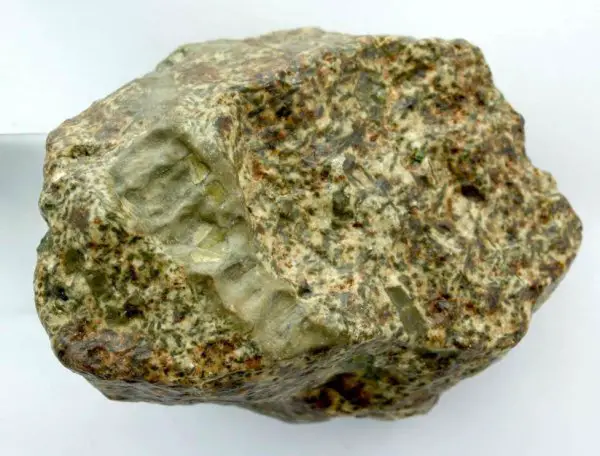A Meteorite Older Than Earth Has Been Discovered And Likely Came From A “Protoplanet”
Tags: News

Scientists have discovered several amazing things related to meteorites all over the world. A team led by Jean-Alix Barrat has announced that an ancient rock has been discovered which predates the planet itself. Barrat is a geochemist and works at the University of Western Brittany in France. He believes that this rock comes from a protoplanet. In layman terms, it means that it came from an “infant planet that never grew up”.
The name of the rock is EC 002, which can provide new insights into the early days of our solar system.
Their study was later published in the Proceedings of the National Academy of Sciences journal.
The Discovery Of The Interesting Meteorite: EC 002
EC 002 or Erg Chech 002 was discovered in the Erg Chech region in Adrar, Algeria in 2020. It was a piece from a meteorite that weighed 32 kgs altogether.
The Lunar and Planetary Institute describes EC 002 as being “relatively coarse-grained, tan and beige appearance with sporadic larger green, yellow-green and less commonly yellow-brown crystals.”
READ: THE DAY ‘MONEY FELL OUT THE SKY’ – METEORITE FRAGMENTS VALUED UP TO $26,000 RAIN DOWN IN BRAZIL
A brief identification of the meteorite EC002 classified it as an achondrite. Achondrites are rocks that blast off from the faces of planets and are considered to be quite new. Their composition can give us an idea about their formations as they exhibit characteristics that are consistent with the period of internal melting that separates the core from the crust of a young planet. Such rocks are quite uncommon as only 3,179 of the tens of thousands of meteorites are chondrites, as listed in the Meteoritical Bulletin Database.
How Is This Meteorite Different From The Others?
95% of the meteorites that are found come from 2 bodies in space while 75% come from a large asteroid known as 4 Vesta.
The achondrites are basaltic as they originate in the planet’s basaltic crust. EC002 does not fall in that category. The rock is of volcanic origin and is known as andesite. Scientists have measured the radioactive isotopes of Magnesium and Aluminium it contained and have concluded that those minerals had crystallized 4.56 billion years ago. Earth has formed only 4.54 billion years ago.
Subscribe to our Youtube channel, new videos every week:
This piece of cooled magma is the only survivor of that distant past and authors have written that “no asteroid shares the spectral features of EC 002, indicating that almost all of these bodies have disappeared, either because they went on to form the building blocks of larger bodies or planets or were simply destroyed.”
The andesite found in EC 002 is quite interesting. On our planet, sodium-rich-silicates are commonly found in the subduction zones where one tectonic plate moves under the other.
EC 002 was not the first andesite meteorite that was found. A study of Graves Nunataks 06128 and 06129, discovered in Antarctica raised the possibility that such rocks are formed when planets containing chondrites melt.
Some authors have theorized that this melting phenomenon was a common occurrence during the formation of planetary bodies. Indeed, Barratt’s study says, “It is reasonable to assume that many similar chondritic bodies accreted at the same time and were capped by the same type of primordial crust.”
READ: INSIDE OF THIS METEORITE THAT CAME FROM THE CORE OF ANOTHER PLANET IS A NEW MATERIAL
The notion is quite interesting but offers two problems.
The EC 002’s reaction to light is unlike anything else in the known Universe and secondly, not many andesite meteorites have been found, which makes us wonder about their locations. Such rocks could have broken apart or smashed or were either subsumed in the formation of other planets, just like our planet Earth.
Image credit: A. Irving / Public domain
Leave Comment: